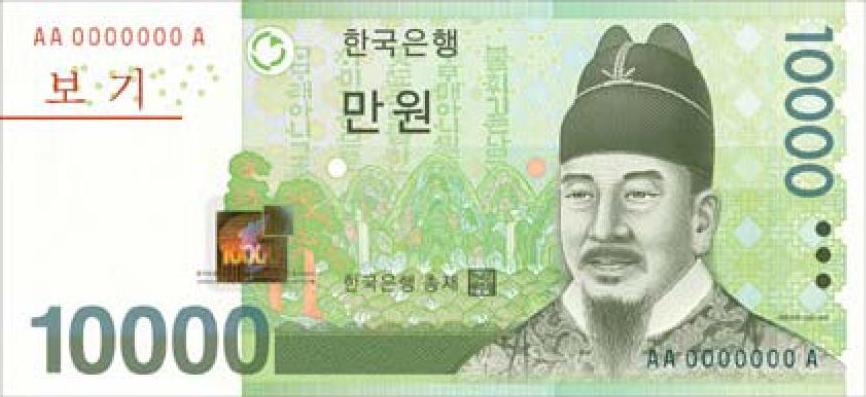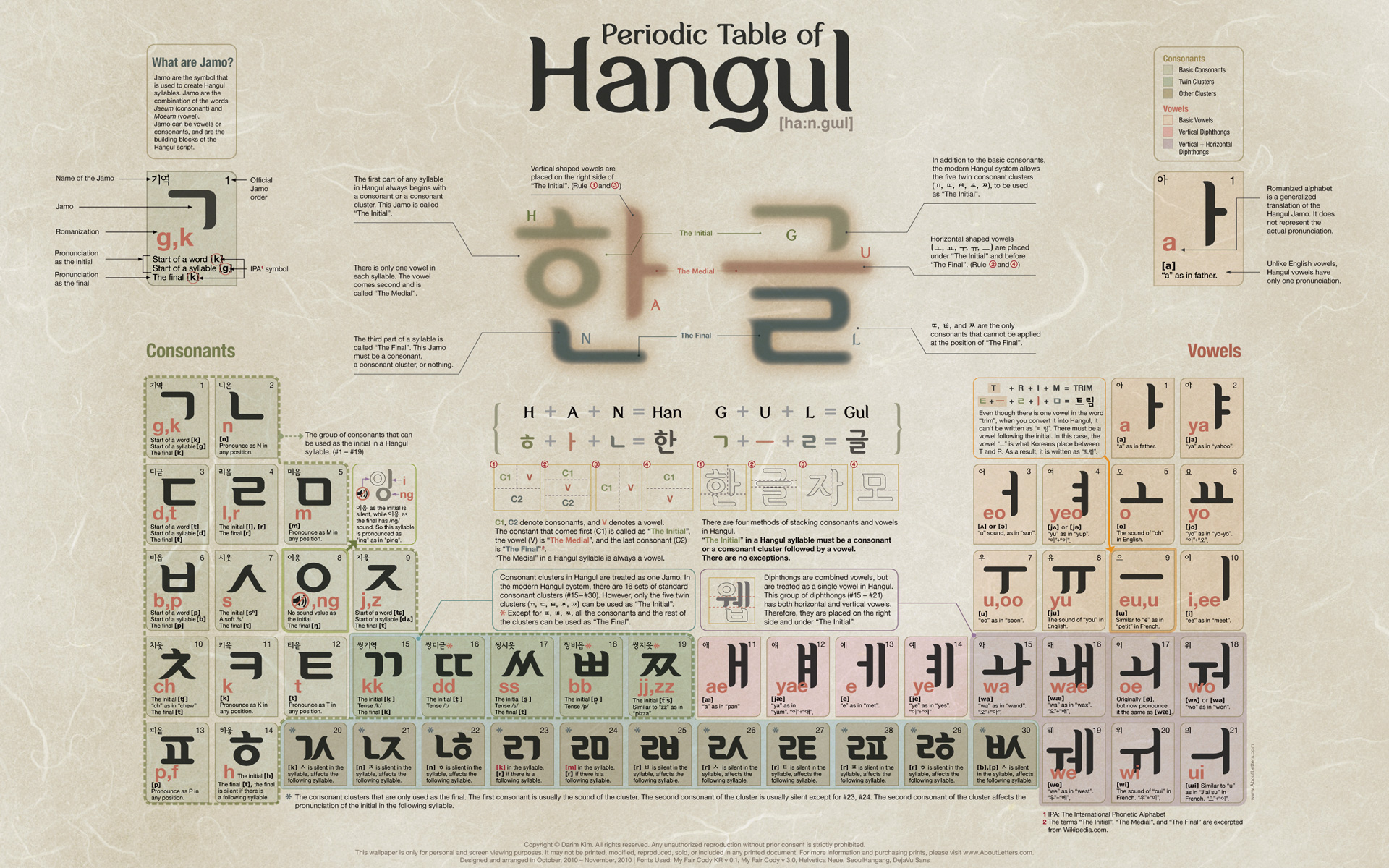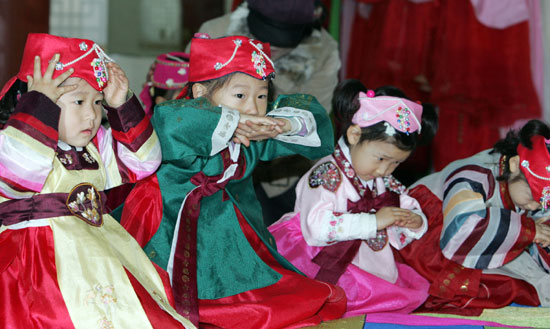꼭두각시놀음 Kogdugaksinori is the last performance of 사당패 Sadangpae a wandering troupe, which started in the 18th century.
The story :
박첨지 Park Cheomji was an old man who had a concubine. When she knew about her husband's affaire, 박첨지's wife ran away from home. He then went looking for her. On the road the couple met several people and converted to buddhism.
A composit art :
꼭두각시놀음 is concidered a composit art 종함예술, since it contains at the same time dancing, singing, acting, etc...
During the play, the daejabi -man who holds and manipulates the dolls-, often chats with the man playing music under the stage : the sanbaji.
The stage :
"The puppet show was performed in an open-air stage called p'ojang, which was made by erecting four poles in a space of about 10 square meters, from which a stage protruded, with the rest of the space being curtained off. The stage was 25 meters wide and 0.7 meters deep, and the puppets moved around in the air at the height of about 1.2 meters... " Lee, Mee-won (Summer 1997). "The Roots and Transmission of Korean Performing Arts."
Names of the dolls (Korean only) :
01-박첨지(노인, 주역이자 극 진행상 해설자를 겸함)
02-꼭두각시(박첨지의 본마누라)
03-홍동지(박첨지의 조카, 벌거벗은 힘꾼)
04-덜머리집(박첨지의 첩)
05-피조리(박첨지의 조카딸) 2인
06-상좌(파계한 암자의 승려) 2인 (7) 홍백가(붉고 흰 두 얼굴을 가진 남자)
07-표생원(시골양반)
08-묵대사(도에 이른 고승)
09-영노(무엇이나 먹겠다는 걸신들린 요귀)
10-귀팔이(뜯기다 못하여 귀까지 너풀대는 백성의 하나)
11-평안감사(권력의 상징으로 내세운 탐관)
12-작은 박첨지(박첨지의 동생)
13-박첨지 손자(저능아) 3인
14-상주(평안감사의 아들)
15-동방석이(삼천갑자를 살았다는 동방삭)
16-잡탈(마을사람, 남자들) 3인
17-사령(평안감사의 매사냥 장면과 상여장면에 나오는 관속) 3인
18-상도꾼(평안감사의 상여를 멘 사람) 12인













